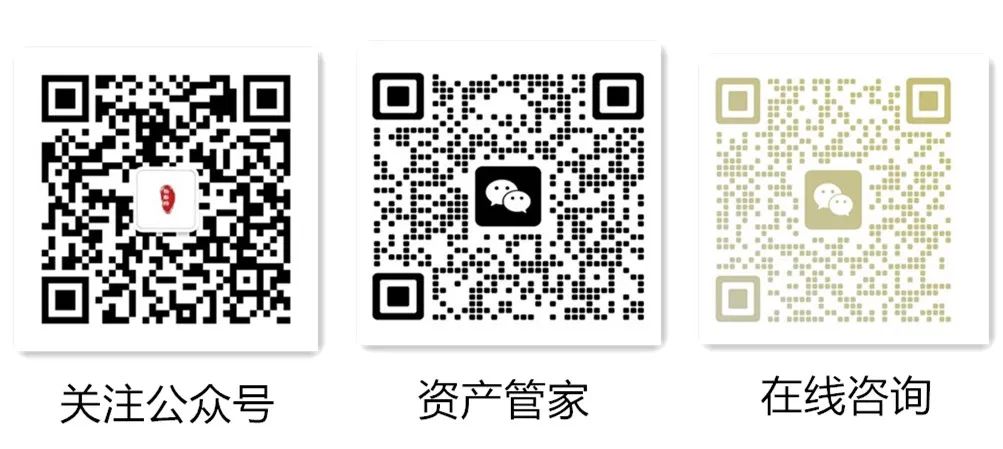- Knowledge
These contents cannot be used as trademark applications!
preface:

In daily life, we often find a hot search when browsing news: XXX trademark registration rejected.
In most cases, the term 'XXX' here refers to individuals, events, locations, items, etc. that have been trending, have an impact on a certain field or industry, and have attracted widespread attention and discussion. Many businesses and agents choose to register their trademarks as soon as possible in order to capture hot topics, ride on traffic, and attract consumers' attention. But the result is often like the beginning, the request will be rejected by the Trademark Office in accordance with the law, and sometimes even the applicant and agent who applied for this trademark will be punished accordingly.
Why did this situation occur? On the one hand, many applicants are aware that they will be rejected, but still harbor a sense of luck in giving it a try; On the other hand, the applicant has not yet had a comprehensive and systematic understanding of which content cannot be used as a trademark application.
In order to help everyone better apply for trademarks, reduce the probability of trademark rejection, and also to remind everyone to avoid the mentality of taking shortcuts when registering trademarks.
Today, we bring you the 'Marks that cannot be used as trademarks'.

1、 Scope and Basis of Application
Article 10 of the Trademark Law stipulates that signs cannot be used as trademarks and clarifies the restrictions on using place names as trademarks. 'Not allowed to be used as a trademark' means that in addition to prohibiting these signs from being registered as trademarks, the use of the above-mentioned signs as trademarks is also prohibited.
The legislative purpose of this article is to prohibit the registration and use of signs that harm or may harm national dignity, social public interests, social public order, ethnic unity, religious beliefs, or signs that violate social good customs and have other adverse effects.
(1)Article 10, Paragraph 1, Item (1):
Signs that are identical or similar to the national name, national flag, national emblem, national anthem, military flag, military emblem, military song, medals, etc. of the People's Republic of China, as well as signs that are identical to the names, logos, specific locations, or iconic buildings of central state organs, shall not be registered or used as trademarks.
For example: China, China CHN、P.R.C、 Purple Light Pavilion, Huairen Hall, Xinhua Gate, etc
(II)Article 10, Paragraph 1, Item (2):
Same or similar to the name, flag, emblem, military flag, etc. of a foreign country, except with the consent of the government of that country.
For example:

Exception: If the parties submit written proof that the government of that country has agreed, the prohibition provision generally does not apply. If the party concerned has already obtained registration of the trademark on the same or similar goods or services in the foreign country, it shall be deemed that the foreign government has agreed.
But if foreign governments explicitly state that registration in their own country is not considered authorization, or if there are other clear requirements for authorization, it does not necessarily mean that the foreign government agrees, such as Switzerland.
(3)Article 10, Paragraph 1, Item (3):
Names, flags, emblems, etc. of intergovernmental international organizations that are identical or similar, except with the consent of the intergovernmental international organization or that are not easily misleading to the public.
For example:

Exception: Submit written proof that the intergovernmental international organization has agreed;
(IV)Article 10, Paragraph 1, Item (4):
Symbols that are identical or similar to official logos or inspection marks indicating the implementation of controls and guarantees, except for those authorized.
For example:
trademark

China Compulsory Product Certification Mark

approximate
(V)Article 10, Paragraph 1, Item (5):
Similar or identical to the name or emblem of the Red Cross or Red Crescent
For example:

If it has clear other meanings or specific forms of expression that will not mislead the public, this prohibition provision may not apply.
For example:

(VI)Article 10, Paragraph 1, Item (6):
those having the nature of discrimination against any nationality
For example: apply for "Bangzi" on wooden goods (Bangzi is a disparaging term for Koreans)
(7)Article 10, Paragraph 1, Item (7):
Deceptive, easily causing the public to mistake the quality, characteristics, or origin of a product
This refers to the indication of the quality or source of the designated goods or services that exceeds its inherent level or is inconsistent with the facts, which can easily lead to the public's erroneous understanding of the quality or source of the goods or services.
To determine whether the relevant symbol belongs to this situation, a specific analysis must be conducted based on the characteristics of the designated goods or services themselves. For example, when "Haotu" is used on "egg" goods, it is easy for consumers to misunderstand the quality, cultivation methods, and other characteristics of the goods, which belongs to this type of situation.
However, if the public does not mistake the quality or source of the goods or services designated by the logo based on daily life experience, it does not fall under the scope of this provision.
1. Signs that can easily mislead the public about the quality, functionality, purpose, raw materials, content, weight, quantity, price, craftsmanship, technology, and other characteristics of goods or services.
For example:

2. Signs that can easily mislead the public about the origin or source of goods or services
For example:

3. Composed of or containing place names other than those in administrative divisions at or above the county level in China, and used on designated goods, it is easy for the public to mistake the origin of the goods.
For example:

4. Other factors that can easily lead to public misidentification
For example:


2、 Provide an example to illustrate the provision of Article 10, Paragraph 1, Item (8) of the Trademark Law
Overview:
Situations that are harmful to socialist moral standards or have other adverse effects, including situations where the logo itself has adverse effects, or where the logo itself has no adverse effects but is designated for use on specific goods or services and is likely to have adverse consequences, or where registration or use by specific applicants is likely to have adverse effects.
(1)Harmful to socialist moral standards
Words or patterns that are contrary to social order, good customs, and socialist core values, including: terrorism, violence, obscenity, pornography, gambling, feudal superstition, and other uncivilized, vulgar, low style words or patterns that have a negative impact on the relevant public or specific groups, or have derogatory meanings, as well as symbols similar to the shape and pronunciation of the above words or patterns.
(II)Signs of negative political influence
1. Signs that undermine national sovereignty, dignity, image, or endanger national security and undermine national unity.
For example: (including incomplete territory of China), "Independent Port", "Diaoyu Islands", "Green Camp Holiday", "Occupy Central", "Chinese Good Man", "Chinese Partner", "Benevolence and Righteousness towards China", "National Respect", "National Chip", "Chinese Style", etc.
For example:

Exception:

2. Names that are the same or similar to the names of leaders of the Communist Party of China, state leaders, and other countries, regions, or political international organizations known to the public (including not only their real names, but also aliases, nicknames, nicknames, and abbreviations)
For example, "Ye Shuai," "Wen Jiabao," "Run Zhi Xuan," "Gandhi," "Putin," "Obama," etc
3. Similar or identical to the important theoretical achievements, scientific judgments, political discourse, etc. of the Party, or similar or identical to national strategies, policies, important conferences of the Party and the state, etc
For example:

4. Politically significant events, locations, numbers, etc
For example, "September 18th", "25000 li", "Long March", "July 7th", "Xibaipo", "August 1st Uprising", "Red Homeland in Old Areas", and so on.
5. Identical or similar to the name or representative symbol of terrorist organization, cult organization, underworld organization or criminal organization and the name or code of its related leaders
For example, ISIS (short for "Islamic State," a self proclaimed extremist terrorist organization active in Iraq and Syria)
Two liang liang "(also known as the" Disciple Society "of the cult)
Red Gang Society "(" Red Gang "is the name of a gang of organized crime in the old Chinese society)," Osama bin Laden "(leader of Al Qaeda), and so on.
6. Other politically negative influences
For example:

(3)Signs that are prone to negative impacts on the economy, culture, ethnicity, religion, and society
1. Same or similar to the names or symbols of legal currencies in various countries
For example: "USD", "Lira", etc
2. Containing non-standard Chinese characters or non-standard use of idioms
Non standardized Chinese characters usually include self created characters, added or missing strokes, stroke errors, and other situations. The non-standard use of idioms, including the substitution of homophones, can easily mislead the public, especially minors.
For example:

Exception: Except for calligraphy style Chinese characters or graphic and artistic designs of some strokes in Chinese characters that are not likely to mislead the public, especially minors, about the relevant writing.
3. Harmful to national or racial dignity or emotions
Specifically, it includes: (1) The logo itself does not vilify or discriminate against any ethnic group, but its use as a trademark may harm ethnic dignity or emotions
(2) Signs containing text, graphics, etc. that may harm racial dignity and emotions
(3) The logo itself does not harm ethnic or racial dignity or emotions, but its use on certain specific goods or services may harm ethnic or racial dignity or emotions
For example, "Miao girl", "Xili mother" (Xibe ethnic belief), "Tujia pride", "black ghost", registering and using the "Indian" logo on sanitary ware products, etc.
4. Harmful to religious beliefs, religious emotions, or folk beliefs
Specifically, it includes: names, common names, graphics, or combinations of religious or folk belief objects, religious activity locations, sects, scriptures, language, rituals, customs, and exclusive items.
For example, "MY GOD SOFT", "Great Tang Buddhist Kingdom", "Mazu", "Shaolin Temple", "Yonghe Temple", "Xuanzang's Hometown", "Bu Er Fa Men", "Chan Lin Mu Hua", "Infinite Fragrance", "One Mountain and Four Realms", etc.
5. The names and abbreviations of various party and government organs, military, police, military units, political parties, government agencies, social organizations and other units or organizations in China are the same or similar, as well as those that are the same or similar to relevant positions, ranks, titles, badges, etc
6. National level new areas or key development areas closely related to China's overall development strategy have the same or similar names, as well as national major projects, major scientific and technological projects closely related to China's political, economic, cultural, and social development with the same or similar names

7. Symbols or related unique vocabulary that are the same or similar to major natural disasters, major accidents, public health events, social security events, etc
For example, "5 1 2", "SARS", "N 9 5", "Huoshenshan", "Leishenshan", "Fangcang Voice", etc.
8. Including the names, portraits, or related deeds, spirits, and slogans of heroes and martyrs
For example, "Liu Hulan", "Qiu Shaoyun", "Clear Love", and so on.
Exception: The logo itself has other meanings or is the name of the applicant, enterprise name, abbreviation of a social organization, or cannot form a corresponding relationship with a specific hero or martyr, which does not cause the relevant public to associate with the name of the hero or martyr, and is not likely to damage the honor and reputation of the hero or martyr and the patriotism of the public.
9. Marks that are identical or similar to the names of public figures related to politics, economy, culture, ethnicity, religion, etc. shall be registered or used as trademarks.
For example:

10. Other factors that may have adverse effects on China's economy, culture, ethnicity, religion, social public interests, and public order
For example, "Mouse Warehouse" and "Fengtian Carrier".
3、 Legal consequences
According to Article 10 of the Trademark Law, relevant signs shall not be used as trademarks. This refers to the fact that the relevant logo cannot be registered as a trademark, nor can it be used as a trademark. If market entities use the aforementioned symbols, relevant departments will investigate and punish them in accordance with the law.
(1)Possible legal consequences
The registration application for relevant trademarks will be rejected for violating Article 10 (1) of the Trademark Law, and registered trademarks will also face legal consequences of being declared invalid. Those who also constitute malicious trademark applications will face penalties such as warnings and fines, and the punishment information will be included in the national enterprise credit information disclosure system for public disclosure in accordance with the law.
Those who use unregistered related trademarks as described in this guideline will be stopped and corrected within a specified time limit in accordance with the law, and will also face penalties such as notification and fines.
(II)Obligations of Trademark Agency
If the trademark applied for registration by the principal may have situations where registration application and use are prohibited, the trademark agency and trademark agent shall clearly inform the principal that applying for such a trademark may result in rejection and prohibition of use.
If a trademark agency or trademark agent knows or should know that the principal has maliciously applied for trademark registration but still accepts their commission, they will face interviews, deadlines for rectification, warnings, fines, and suspension of accepting the trademark agency's trademark agency business. The punishment information will be included in the national enterprise credit information disclosure system and publicly disclosed to the society in accordance with the law.
Source: Official courseware of the Trademark Office







